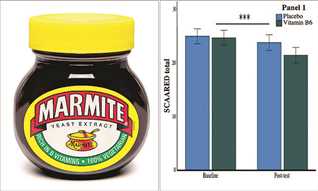Increased Cancer Risk From Night Shift Due to Gene Dysregulation?
Working night shifts has been associated with an increased risk for certain cancers, as well as other health disorders. Indeed, the World Health Organization’s International Agency for Research on Cancer (IARC) has classified night shift work as “probably carcinogenic to humans.”
But why night shift should elevate the risk for cancer has been unclear.
A new study shows that a simulated night shift schedule significantly altered the normal circadian rhythmicity of genes that are involved in cancer hallmark pathways. It also found that this circadian misalignment also caused circadian dysregulation of genes involved in key DNA repair pathways.
“Taken together, these findings suggest that night shift schedules throw off the timing of expression of cancer-related genes in a way that reduces the effectiveness of the body’s DNA repair processes when they are most needed,” said co-corresponding author Jason McDermott, a computational scientist with the Pacific Northwest National Laboratory’s Biological Sciences Division in Richland, Washington.
The study was published online in the Journal of Pineal Research.
Study Conducted in Volunteers
The study was carried out in healthy volunteers who were subjected to simulated night shift or day shift schedules.
The cohort included 14 adults between the ages of 22-34 years who had normal nighttime sleep schedules. The group was randomly assigned (7 in each group) to either a simulated day shift schedule that involved three days of daytime wakefulness (6 AM-10 PM), while the other group were put on a simulated night shift schedule involving three days of nighttime wakefulness (6 PM-10 AM).
After the three days of simulated shift work schedule, all participants were then kept in a constant routine protocol (used to study humans’ internally generated biological rhythms independent of any external influences). As part of the protocol, they were kept awake for 24 hours in a semi-reclined posture under laboratory conditions with constant light exposure and room temperature and evenly distributed food intake (hourly isocaloric snacks).
Blood samples were collected at 3-hour intervals and used for leukocyte transcriptome analysis and DNA damage assessment.
The authors found that the circadian expression of canonical clock genes was substantially altered by the simulated night shift schedule vs the day shift schedule. Four genes (CRY1, CRY2, PER2, and NR1D2) lost their normal day shift rhythmicity following the night shift schedule, and NPAS2 gene expression was not rhythmic during day shift but exhibited circadian rhythmicity in the simulated night shift condition. Three other genes (NR1D1, PER3, and DBP) were significantly rhythmic during both shifts.
The team also looked at the effect of night shift on circadian rhythmicity in cancer hallmark genes, using a panel of 726 genes. The analysis showed that:
-
257 (35.4%) were rhythmic after at least one of the two simulated shift work conditions
-
113 (15.6%) were rhythmic in day shift only
-
96 (13.2%) were rhythmic during night shift only
-
48 (6.6%) were rhythmic during both shifts
A subset of 10 (1.4%) genes exhibited a significant phase advance (3.7 to 8.3 hours) or phase delay (2.8 to 7.0 hours) during night shift vs day shift.
Thus, the authors conclude, shift work caused significant disturbances in the rhythmicity of gene expression in cancer hallmark pathways.
Findings also showed that night shift work increases endogenous and exogenous DNA damage. Endogenous DNA damage was generally higher after night shift compared to the day shift, and the across the 24-hour constant routine the percentage of cells with BRCA1 and g H2AX foci was significantly higher for night shift.
Next Steps
The team said that the next step is to conduct the same experiment with real-world shift workers who have been consistently on day or night shifts for many years to determine whether in night workers the unrepaired DNA damage builds up over time, which could ultimately increase the risk for cancer.
If what happens in real-world shift workers is consistent with the current findings, this work could eventually be used to develop prevention strategies and drugs that could address the mistiming of DNA repair processes, they suggest.
“Night shift workers face considerable health disparities, ranging from increased risks of metabolic and cardiovascular disease to mental health disorders and cancer,” co-senior author Hans Van Dongen, a professor in the Washington State University college of medicine and director of the WSU Sleep and Performance Research Center, Spokane, commented in a statement. “It is high time that we find diagnosis and treatment solutions for this underserved group of essential workers so that the medical community can address their unique health challenges.”
The study was supported by start-up funds from Washington State University and a CHHE grant from North Carolina State University, and in part by the United States Army Medical Research and Development Command, the National Institutes of Health, CDMRP Peer Reviewed Cancer Research Program award, and the BRAVE investment.
The authors have disclosed no relevant financial relationships.
J Pineal Res. Published online February 27, 2021. Abstract
For more from Medscape Oncology, join us on Twitter and Facebook
Source: Read Full Article



